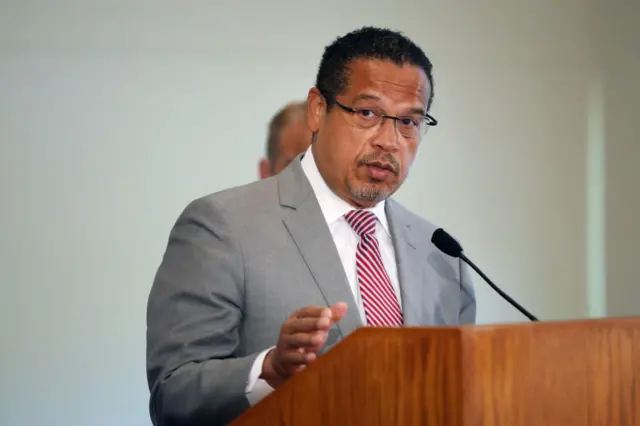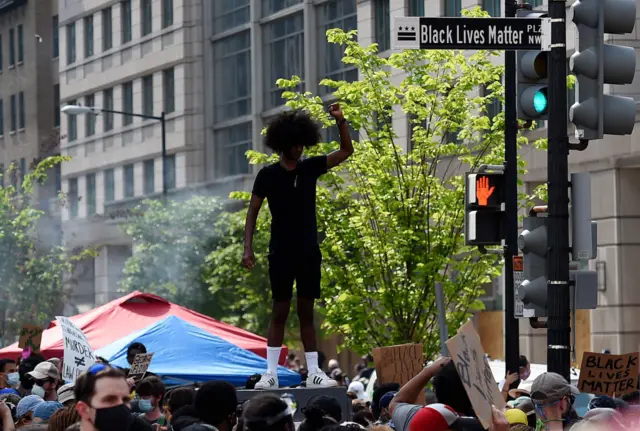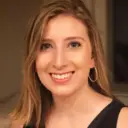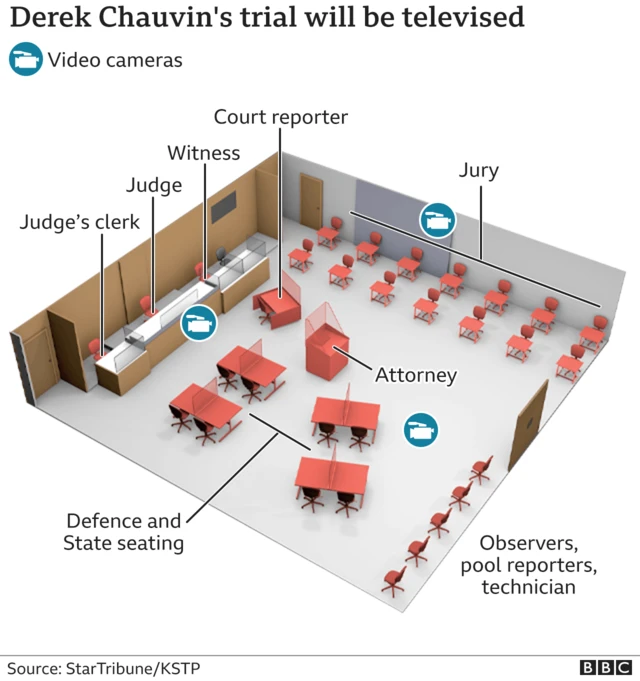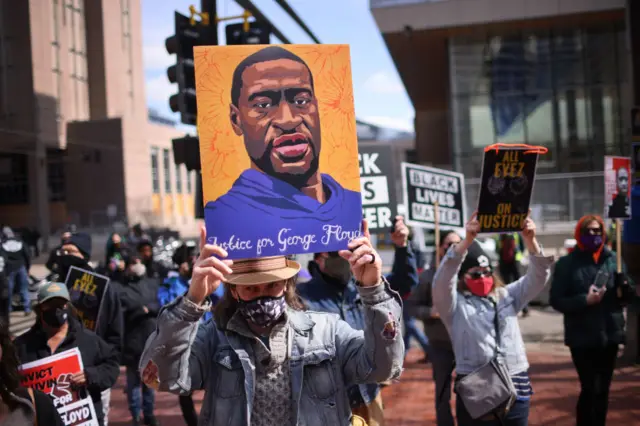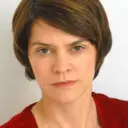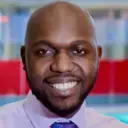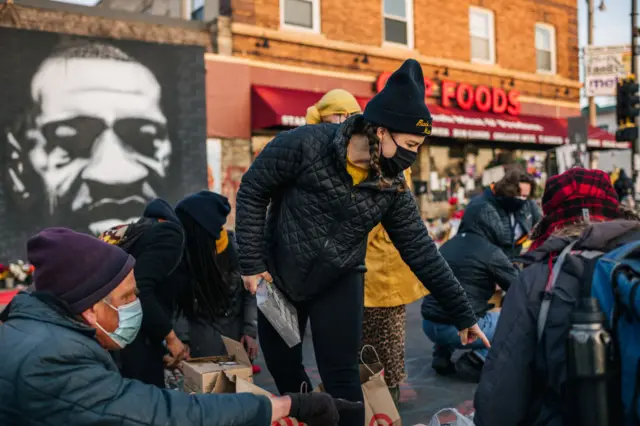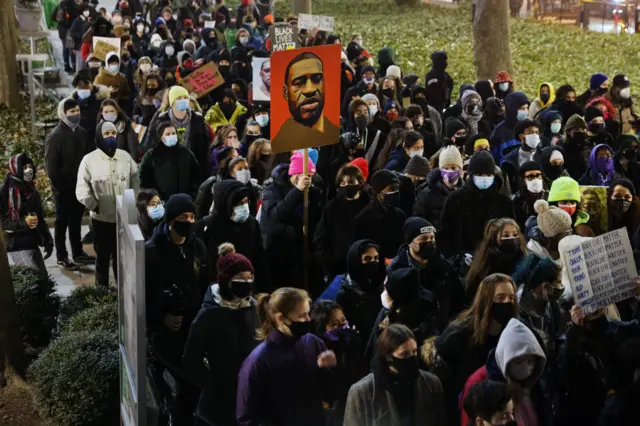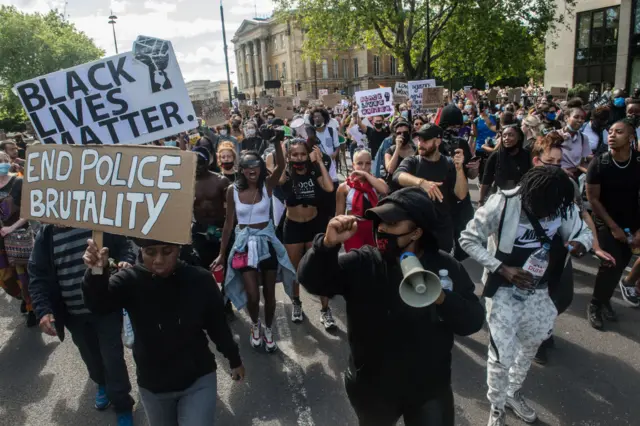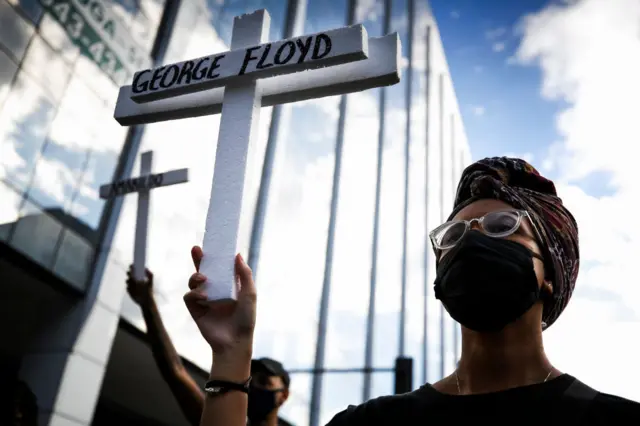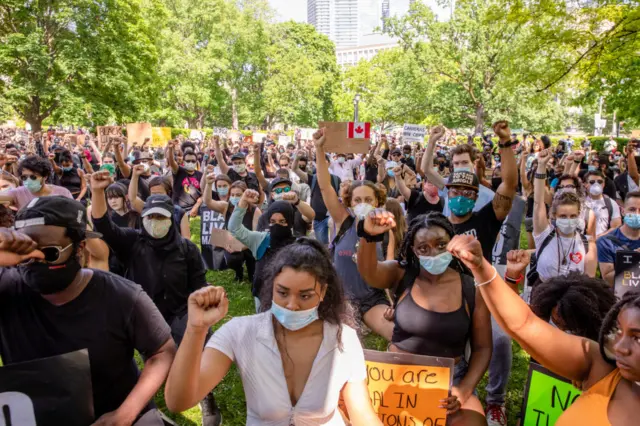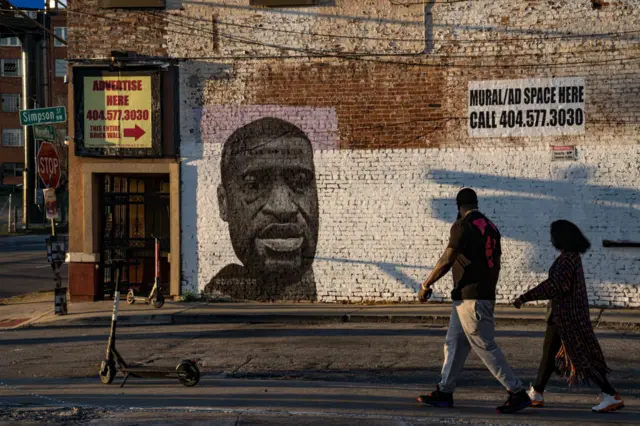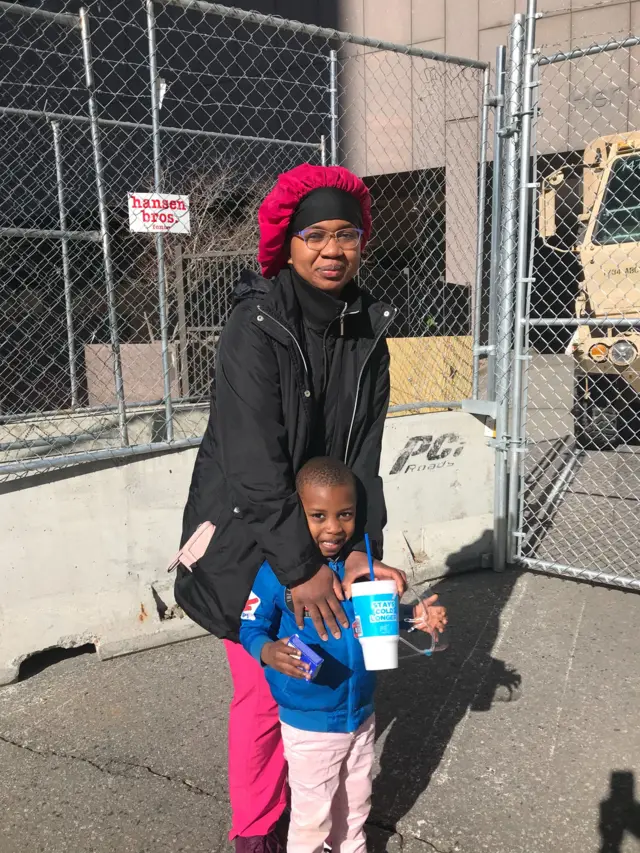Just tuning in?published at 20:01 BST 29 March 2021
If you're just joining us - welcome.
The defence team is now cross-examining police dispatcher Jena Scurry, asking detailed questions about what she saw and heard.
We're getting an almost minute-by-minute recounting of the moments before George Floyd died, from Scurry's perspective.
The defence attorney asks Scurry why she sent a backup squad car to the scene where Floyd had allegedly used a counterfeit $20 bill.
"I heard a loud... something in the background," Scurry says, from the officers calling.
